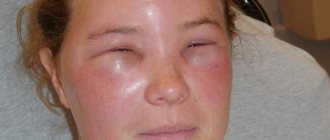Why do my legs and arms go numb? What diseases can lead to these symptoms? Which doctor should I contact? How to diagnose the cause?
Numbness in the arms and legs is a neurological symptom that most often indicates damage, inflammation, or compression of sensory nerves. Often, numbness is accompanied by pain and unpleasant sensations such as tingling and “crawling goosebumps.” Many nerves are mixed, that is, they contain both sensory and motor fibers. In such cases, numbness is combined with a decrease in muscle tone and impaired movement.
There are many reasons for numbness in the limbs. Most often they are associated with pathological processes in peripheral nerves. The larger the nerve, the larger part of the limb loses sensation. In rare cases, the symptom is caused by disorders of the brain and spinal cord.
What is hand numbness and its causes?
Many people are familiar with the unpleasant feeling of tingling, “crawling on the skin,” as well as pain, decreased sensitivity and deterioration of mobility in the limb. All of these manifestations characterize numbness, which can occur in the arms, legs and other areas of the body. It is associated with impaired blood circulation in the tissues or compression of the nerves.
Along with numbness in the hands, the following symptoms may also occur:
- burning sensation;
- muscle spasms;
- tingling sensation;
- pain in hands, fingers;
- feeling of itching;
- tingling and numbness that gets worse when you move your fingers;
- increased sensitivity to touch;
- pain in the cervical spine.
Numbness during pregnancy
In the 2nd and 3rd trimester, women very often experience loss of sensation in the hands, sides of the thighs and feet. If an expectant mother's right or left hand becomes numb, this is often caused by carpal tunnel syndrome. This means that the woman is suffering from compression of the nerve that is located in the wrist. This occurs against the background of swelling of the surrounding tissue. As a rule, the symptoms of such a pathology increase significantly at night and in the morning. To solve this problem, experts recommend that women do hand exercises. It is worth noting that such a syndrome should not cause concern to the expectant mother, since such pathologies do not have any effect on the fetus.
If a pregnant woman has numbness on the right side of the thigh or its left part, then this, as a rule, indicates that childbirth will soon occur. This is explained by the fact that compression of the external cutaneous nerve occurs. As a rule, if a woman begins to bend her legs at the hip joint, then the unpleasant symptoms go away. Such problems also cannot have a negative impact on the fetus.
If a pregnant woman has numbness on the right side of the thigh or its left part, then this, as a rule, indicates that childbirth will soon occur. This is explained by the fact that compression of the external cutaneous nerve occurs. As a rule, if a woman begins to bend her legs at the hip joint, then the unpleasant symptoms go away. Such problems also cannot have a negative impact on the fetus.
In addition, it is worth considering that during pregnancy women experience a deficiency of beneficial microelements. If it lacks magnesium, calcium, iron and other components, then this may well lead to numbness in different parts of the body. As a rule, to get rid of such symptoms, it is enough to undergo a course of treatment with special products that contain the necessary vitamins.
However, it should not be ruled out that during pregnancy, loss of sensitivity may be associated with one of the diseases described above.
Causes of numbness in the left hand:
- Cardiac ischemia. In addition to numbness in the left arm, there is discomfort in the chest. If after taking nitroglycerin or stopping the physical activity that caused the symptoms, these manifestations disappear, then it is angina pectoris. In addition to numbness of the left arm, it is accompanied by chest pain in the heart area, panic, pale skin, nausea, shortness of breath, and cold sweat.
- Myocardial infarction. Sometimes hand numbness is the only sign of this acute cardiovascular disaster. During an attack, the patient experiences intense pain and a feeling of constriction in the chest, shortness of breath, and interruptions in the functioning of the heart. The skin becomes covered with cold sweat. Along with numbness in the hand, a person experiences pain radiating to the lower jaw, stomach, and the area between the shoulder blades.
- Atherosclerosis. Due to atherosclerotic damage to the blood vessels, decreased strength and numbness in the arm may occur. Symptoms intensify when raising the limb upward.
- Stroke. Numbness in the left hand may indicate damage to the right hemisphere of the brain. In this case, the upper and lower limbs on the left side become numb, vision and speech are impaired. Along with numbness in the hand, a stroke can cause a complete loss of sensation in the hand. Other symptoms of cerebral hemorrhage include weakness in the limbs, loss of coordination, severe headache, blurred vision, nausea and vomiting, and irritation from bright lights and sounds.
- Vegetative-vascular, or neurocirculatory dystonia. This is a complex of autonomic disorders that is associated with disorders of nervous regulation. In addition to numbness of the left hand, it may be accompanied by headaches, insomnia, pressure fluctuations, arrhythmia, and panic attacks.
- Raynaud's disease. The pathology is accompanied by paroxysmal circulatory disorders in the arteries of the extremities. Along with the numbness of the hand, its rapid freezing is felt. In the cold and with excitement, a person’s fingers may turn blue. As Raynaud's disease progresses, not only the hands become numb, but also the legs, chin, nose, and ears.
- Vitamin B12 deficiency. This connection is extremely important for the normal functioning of nerve tissue. With its deficiency, a person not only experiences numbness in the hand, but also suffers from dry mouth and pale skin.
- Osteochondrosis (usually cervical and thoracic). First, the fingers go numb, then weakness develops in the upper limb, and the grip strength of the hand decreases. Sometimes pain is felt along the outside of the shoulder and forearm.
- Overstrain of muscles in the cervical-collar region. Pianists and PC operators suffer from hand numbness due to prolonged maintenance of the same position. The problem lies in the overstrain of the muscles, which compress the nerve fibers responsible for the sensitivity of the limbs.
- Insufficient blood circulation. The upper limb becomes numb due to impaired blood flow due to damage to the walls of blood vessels, for example, in diabetes mellitus.
- Stress and psycho-emotional overload can cause hand numbness.
- Carpal tunnel syndrome. When the median nerve passing through the wrist is compressed, the left hand may become numb. This problem is familiar to people of certain professions (programmers, musicians). Nerve compression can also occur in women during pregnancy due to swelling, as well as in patients after surgery, in obese people.
Brain tumors
If a person’s right hand or left side of the body goes numb, then perhaps in this case we are talking about neoplasms that compress the surrounding areas of brain tissue, which leads to disruption of their performance.
Against this background, severe headaches often appear, it becomes difficult for the patient to move, vision deteriorates, weakness appears, and arms and legs begin to move much worse. Additionally, patients suffer from poor appetite.
As a rule, in this case we are also talking about unilateral numbness on the right side of the body or on the left. However, in some situations, problems may be observed only in the extremities. It is worth noting that unpleasant symptoms do not appear acutely, but increase over time.
Numbness in the right hand may have the following causes:
- impaired blood flow, pinched nerve due to incorrect position of the limb (for example, during sleep);
- staying in an uncomfortable position for a long time (may be due to the nature of the work, for example, carpal tunnel syndrome);
- frequent carrying of bags, suitcases and other heavy objects;
- long exposure to frost or in a cold room;
- long-term muscle tension of the upper limb.
Why does hand numbness occur?
When a patient says that his upper limbs are numb, he may mean:
- a tingling feeling that causes discomfort;
- sensation of “goosebumps” under the skin;
- decreased sensitivity of the skin.
Numbness of the hands does not always indicate pathology. It may be the result of wearing too tight clothes and jewelry that compress blood vessels and nerves.
The most common causes of numbness in the hands:
- Uncomfortable body position, monotonous mechanical work, disrupting blood flow. After changing the position of the limb, the unpleasant sensations disappear.
- Carpal tunnel syndrome (usually affects the working hand due to prolonged monotonous work).
- Atherosclerosis. Accompanied by tingling and numbness of the hands, in the future a decrease in their muscle strength is likely.
- Osteochondrosis of the cervical spine (numbness, usually symmetrical, may intensify after physical activity).
- Diabetic neuropathy (usually both hands go numb).
- Intervertebral hernia in the cervical region (numbness is associated with compression of the spinal nerve roots).
- Ischemic stroke of the brain (threatens numbness and paralysis of the arm).
- Multiple sclerosis (if part of the postcentral gyrus of the brain is affected, the limbs may go numb).
- Thoracic outlet syndrome (compression of nerve trunks and blood vessels in the area of the upper chest opening).
- Brachial plexitis (numbness of the arm occurs due to inflammation of the brachial plexus).
- Damage to peripheral nerves due to alcoholism (alcoholic polyneuropathy).
- Brain tumor (the formation can compress the motor and sensory neurons responsible for the innervation of the upper extremities).
- Raynaud's disease (a disorder of the innervation of small arterioles, more common in women, manifested by numbness and pain in the extremities).
- Rheumatoid arthritis (inflammation and deformation of joints leads to compression of nerve fibers) and others.
Main services of Dr. Zavalishin’s clinic:
- consultation with a neurosurgeon
- treatment of spinal hernia
- brain surgery
- spine surgery
Multiple sclerosis
Speaking about why the right side goes numb, it is worth considering this disease. This disease is a chronic pathology of the central nervous system. In this case, part of the nerve tissue of the brain begins to be replaced by connective tissue. Firstly, with multiple sclerosis, patients complain that their right hand and other limbs are numb. They become difficult to control.
Additional symptoms include visual impairment and other signs of central nervous system disease.
Diagnosis of the causes of hand numbness. How to identify?
At the appointment, the doctor examines and palpates the patient’s limb and asks the following questions:
- Where exactly is the numbness felt?
- When did the unpleasant tingling sensation and decreased sensitivity first appear?
- How long does numbness in a limb bother you?
- What actions and movements aggravate symptoms?
- Are there any other complaints, such as burning, itching, tingling, pain?
- How do your arms, hands, and fingers feel—cold or warm?
The main task of the doctor is to determine the causes of hand numbness. It is necessary to exclude systematic mechanical compression of blood vessels, as well as to determine household and industrial factors that could cause disturbances.
Numbness may be a harmless symptom, but it may also hide serious problems - myocardial ischemia, stroke, spinal problems, diabetes mellitus, amyotrophic lateral sclerosis, etc. In this case, the doctor issues a referral to doctors of relevant specializations (cardiologist, endocrinologist, neuropathologist, etc.).
The main emphasis in identifying the causes of numbness is on detecting signs of osteochondrosis. For this, the patient is referred for magnetic resonance imaging, radiography, computed tomography, and electromyography. The purpose of imaging studies for arm numbness is to determine the height of the intervertebral disc, detect osteophytes, and clarify the presence of protrusion or intervertebral herniation.
Diagnostics
The initial doctor’s appointment will consist of listening to the patient’s complaints and conducting an examination, on the basis of which the specialist will plan further diagnostic measures. To make a reliable diagnosis and begin treatment, you need:
- laboratory tests that determine a general, biochemical blood test with calculation of glucose levels, lipoproteins, triglycerides and cholesterol. If arthritis is suspected, a urine test is necessary;
- radiography is an accessible study that excludes injuries, inflammation, the formation of tumors, and bone growths;
- CT, MRI. Highly informative techniques that provide a complete picture of the size, location and nature of the pathology;
- electrophysiological diagnostic procedures that clarify the characteristics of nerve damage;
- Ultrasound, sonography, duplex scanning. Studies shown in the study of arterial lesions, varicose veins. An assessment of blood flow and its character is given. The sizes of the vessels are measured.
Principles of treating hand numbness
The primary task of the doctor is to identify the root cause of this symptom. For this purpose, radiography, myelography, MRI, blood tests, etc. can be performed.
Depending on the nature of the disease that caused numbness in the hands, treatment methods are selected. First of all, the underlying disease is treated. Drug treatment is supplemented by:
- physiotherapy;
- physical therapy;
- reflexology;
- massage;
- diet therapy;
- lifestyle correction.
Preventing numbness in the hands
In order to prevent discomfort in the upper extremities, it is recommended:
- exercise regularly (discuss the type and nature of exercise with your doctor in advance);
- maintain the health of blood vessels, joints and the body as a whole (give up bad habits, eat rationally);
- dress according to the season, keep your hands warm;
- take breaks every 40 minutes if your profession involves working on a PC or performing monotonous hand movements.
How to tell if you have dystonia
People who live with vegetative-vascular dystonia for quite a long time get used to their symptoms if they do not manifest themselves as crises and do not disrupt the normal course of life.
They learn to live with headaches, endure periodic numbness in their arms or legs, sometimes suffer from rapid heartbeat, and know that when the weather changes, they may experience insomnia. The rest of the time, VSD does not make itself felt and does not cause life-threatening conditions. But some manifestations of dystonia feel truly scary. A lump in the throat and a feeling of lack of air, palpitations and fear during panic attacks, sudden loss of consciousness, pressure changes. If after such an incident you were examined and no dangerous diseases were found, then with a high probability we can talk about VSD.
Numbness of the limbs with dystonia is usually associated with an unpleasant experience. Such a reaction of the body can occur even in anticipation of a pleasant event, from an excess of emotions.
Treatment with folk remedies
The following recipes help with numb hands:
- as a compress or therapeutic bath, use a mixture of 2 liters of milk, 600 g of salt and 50 g of honey, heated to 60? C;
- apply an infusion of wild rosemary with apple cider vinegar (1:3) 3 times a day;
- infusion of garlic (several cloves) in vodka (400 ml) taken orally, 3-5 drops dissolved in water;
- for 1 liter of vegetable oil - 100 g of ground black pepper, cook for 30–40 minutes, rub the cooled product into the skin of the affected limb.
Diagnosis of numbness, burning, tingling sensations
If a person, at some point, begins to worry, his quality of life deteriorates, he begins to visit doctors of various specialties. And if doctors rule out somatic pathology, then an in-person joint consultation with a psychotherapist and a neurologist is necessary, since these sensations are more common with any disorders of the nervous system.
The sensation of numbness, burning, tingling in various parts of the body is a consequence of disruption of the autonomic nervous system. As a rule, such sensations are quite common in anxiety-neurotic syndromes complicated by autonomic reactions (disruption of higher nervous activity) and various neurological changes. At the biological level, the central nervous system gives the wrong impulse to the peripheral nervous system, and these unpleasant sensations appear, which destabilize the person’s mental state even more. The person begins to worry about what perpetuates this pathological reaction of the nervous system. It turns out to be a “vicious circle”.
Differential diagnosis
Also, numbness and tingling in various parts of the body can be a pathology of sensations in the form of so-called senestopathy. The unpleasant, painful, sometimes unusually painful affective tone of the sensations of senestopathies, as a rule, is consonant with an anxious-depressive mood. These sensations are long-lasting, occur in short bursts and are always difficult for people to bear.
It is very important to note that the occurrence of senestopathies is not associated with local disorders, which can be established by standard diagnostic research methods.
As a rule, at the onset of the disease, with manifestations of senestopathy syndrome, sensations most often have a certain localization and similarity to the manifestations of general somatic diseases. Subsequently, these sensations lose their strict localization, become diffuse, and acquire an unusual, and often pretentious, character.
The above disorders in the form of numbness or tingling in various parts of the body can be symptoms of various mental disorders, ranging from neurotic disorders to severe psychotic illnesses.
If we are talking about an anxiety-neurotic disorder (a breakdown of higher nervous activity), then, as a rule, neuroses are borderline mental states and, with adequate therapy, they are reversible and the prognosis is quite good.
To accurately determine the condition, you need the correct diagnostic basis and consultation with a psychotherapist, who, using the results of the examination, will be able to prescribe treatment; as a rule, complex therapy is needed here:
- medicinal, to restore the biological functions of the brain,
- psychotherapy in order to destroy pathological behavior patterns and recreate healthy ones.
Most often, patients with disruptions of higher nervous activity complain of numbness in the extremities, part of the head (especially the scalp), fingers and toes.
The tingling sensation most often occurs in a less localized area of the body and is described by patients, in most cases, as “tingling here and there.”
Example of patient complaints of tingling sensations and feelings of numbness
Such complaints are the most common in the practice of modern psychotherapists and neurologists.
Male, 35 years old. Married, has a prestigious job, no bad habits. I was examined by almost all doctors and got an appointment with a psychotherapist by accident.
For example, we specifically chose a case that does not have a somatic connotation in the form of the consequences of any diseases, for example, alcoholism, drug addiction, vascular changes, brain injuries, etc.
In this case, the manifestation of the patient’s complaints is based on a disruption of higher nervous activity as a result of high psychophysical stress, since these are the patients who make up the largest number among those seeking medical help with similar symptoms.
The patient had a large folder with him with various studies and test results. He came to the appointment accompanied by his wife, who insisted on his conversation with the doctor. His attitude towards the conversation with the psychotherapist is extremely negative.
“I came to you at the insistence of my wife, although I don’t understand how my goosebumps and lack of sensitivity in the back of my head can be related to psychiatry. I know for sure that I am mentally healthy and I have a certificate from a psychiatrist. I have a driver's license and I have a gun." ...
The patient could not calm down for a long time and did not want to have a constructive conversation with the psychotherapist. But, after some time, the doctor finally convinced him to complain about his condition and together figure out the reasons for the decline in his quality of life.
“It started when I began to feel a tingling and pinching sensation in my arm. At first I thought that I was sleeping incorrectly. Then it began to be felt more and spread to the neck and face. It feels like they are being pricked with small needles. It doesn't hurt, but it's very annoying and distracting. I went to the therapist, donated blood for lipids, coagulation, biochemistry, etc. and everything turned out to be normal, so he sent me to a neurologist.
The neurologist sent me first to an MRI, then to an EEG, CT, and ultrasound. Diagnosed with: polysegmental osteochondrosis, scoliosis, functional instability of the cervical spine, vertebral artery syndrome against the background of polysegmental osteochondrosis, Vertebrogenic dorsalgia, narrowing of the vertebral arteries with insufficiency of blood flow of 60%. He prescribed treatment, which I took for 8 months. The result, if you say that it is zero, then this is not true, because it got worse, which is also a result. During this time, the back of my head began to go numb, and goosebumps spread to my stomach. I quit treatment with this neurologist and went to another one. Another made his own diagnosis (transient ischemic cerebrovascular accident), and the result was the same, I went to another - compression of the left vertebral artery in the precranial segment with a local hemodynamic shift at the level of the Atlanta loop, stenosis less than 50%. Then to another, and another. In total, I visited six neurologists who diagnosed me and treated me, but nothing changed, except that the area of numbness on the back of my head grew, and I no longer felt half of my head, and I began to feel tingling sensations in different places.
I can’t even say where I haven’t felt these tingling and goosebumps. The location could change 2-3 times a day. I was treated by neurologists for more than 2 years.
Then they recommended me to a good cardiologist. And again there were various examinations, diagnoses and treatments: sugar was normal, microelements (magnesium, potassium, calcium) were also normal, vitamins were normal. ECG, 24-hour Holter monitoring, ultrasound, etc. His treatment was as useless as that of others.
I visited an endocrinologist, a nephrologist, and an ophthalmologist; I probably went through all the doctors, leaving only the gynecologist and you. I’m talking to you now. I have been going to doctors for four years now, but there is no improvement. I also saw a psychologist, but I just messed with my brain, but it was of no use. I was already tired of being treated, and none of the treatments helped me. Should I go to the gynecologist now?”
It was a story of treatment and torment of a man. The psychotherapist began to find out the circumstances and possible causes. We will present this story in the abstract.
“Yes, I remember, just before it all started, I was having serious difficulties at work. I had to work almost for days, with great nervous overload. It was not always possible to get enough sleep. That’s when I thought that I was sleeping in an uncomfortable position, and this was making my hand go numb. Then everything returned to normal, but these goosebumps sensations remained. I went to a neurologist, assuming it was nervous, but apparently I was wrong.
Now I am worried about dizziness, almost every day. Not strong, most often mild, a feeling of slight intoxication or slight unreality.
A little, in the evening, my head starts to hurt, it’s hard to focus. Sometimes my wife or child says something, but I cannot understand the meaning of what was said. I seem to understand what they said, but I don’t get the meaning.
Headache - in the form of a hoop, also not severe, appeared quite recently, more with pressure on the right and numbness of the head from behind, from the back of the head, right on half of the head.
From time to time I hear some noise in my ears, sometimes in the left ear, sometimes in the right ear (a week on the left, a week on the right). There is a tingling sensation all over the back, like needles. It feels as if I’ve been sitting or lying down, even though I’m not lying down.
My sleep is a little disturbed. I have trouble falling asleep, I constantly have thoughts, and I wake up before the alarm clock or can’t get up in the morning.
Yes, I get up in the morning without sleep, often during the day I feel exhausted and want to sleep.
We tried to do the massage ourselves, but after it the sensations of numbness and tingling intensified, it was better not to touch it.”
Treatment of hand numbness in specialized hospitals
Department of Neurosurgery, City Clinical Hospital named after. A.K. Yeramishantseva sees patients with complaints of numbness in their hands. Here, progressive methods of conservative and surgical treatment of diseases manifested by such symptoms are used. Advanced technical equipment and extensive professional experience of the medical staff guarantee good treatment results. Telephone.
Neurosurgeon Evgeniy Evgenievich Zavalishin treats diseases that cause numbness in the hands. Sign up for a consultation by calling 8 (499) 940-04-30.









